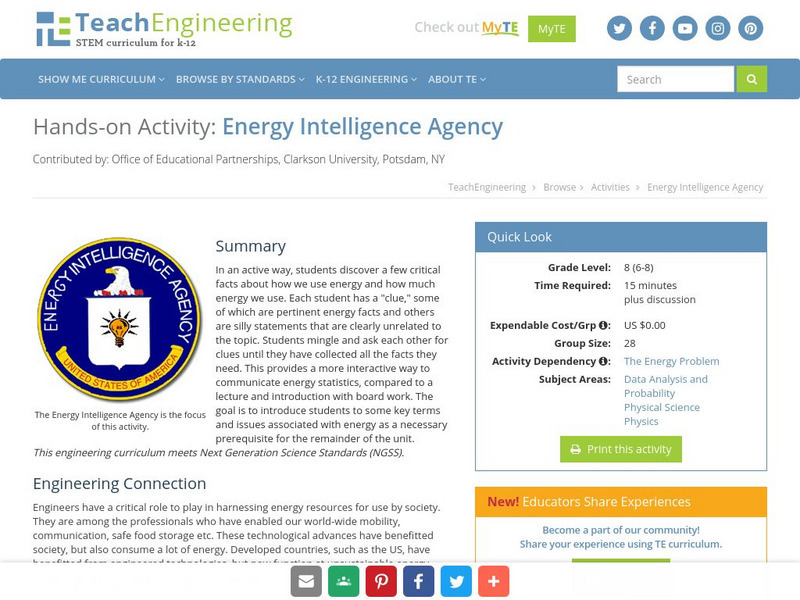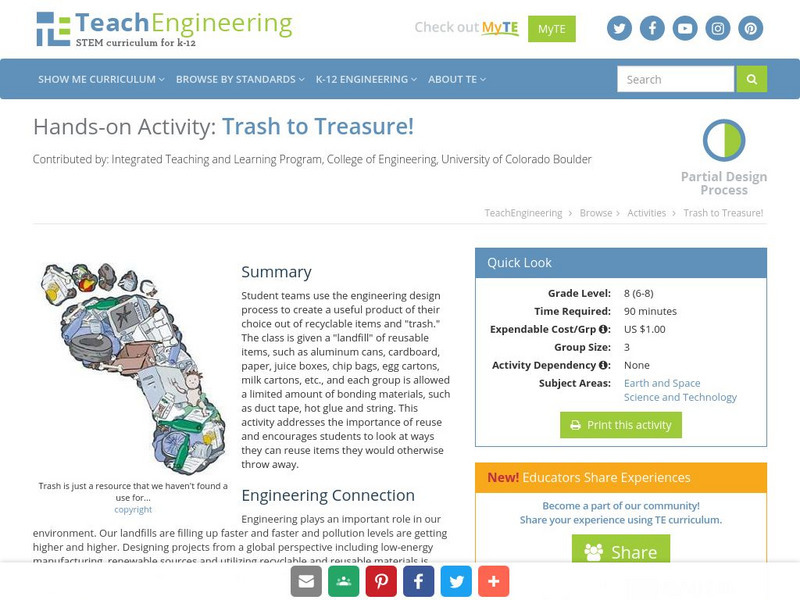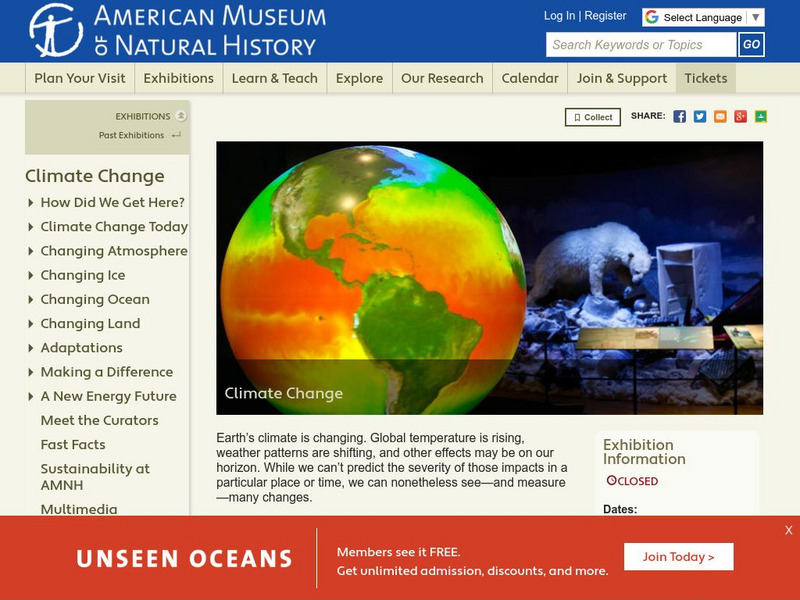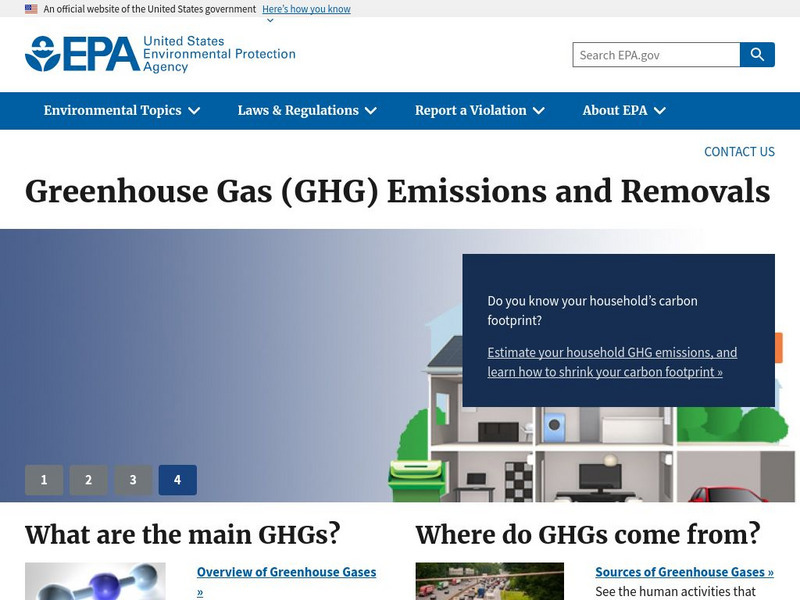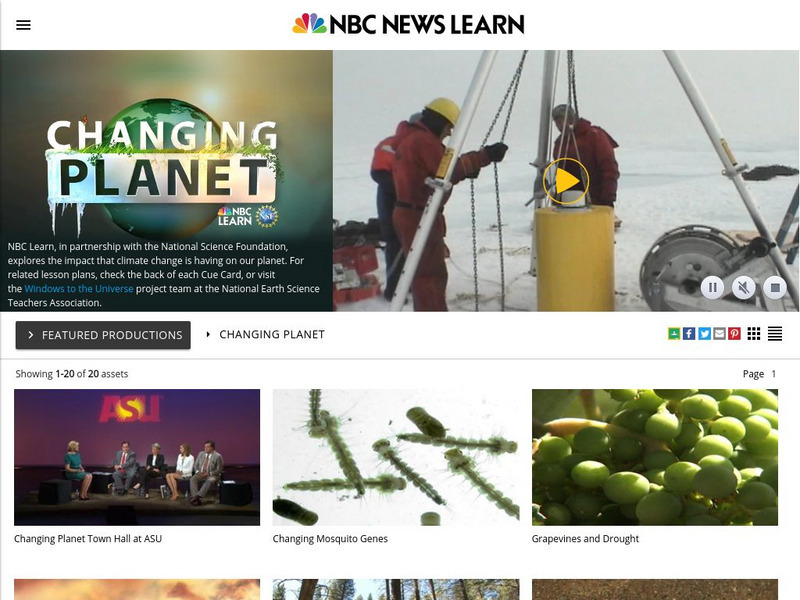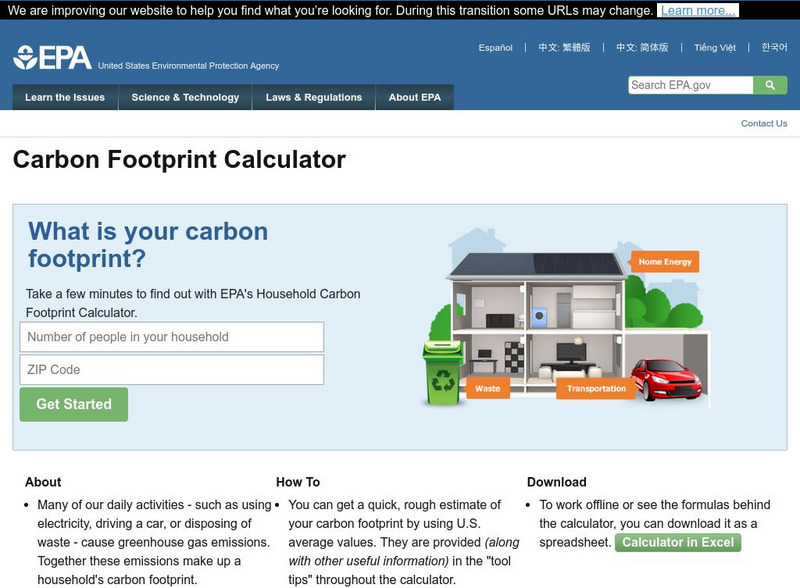Hi, what do you want to do?
University Corporation for Atmospheric Research
Ucar: Project Learn: Where in the World Is Carbon Dioxide?
In this lesson on greenhouse gas, students conduct experiments to detect and collect carbon dioxide, then use titration to determine how much carbon dioxide is present in an indicator solution.
Other
Interactions Between the Atmosphere & Hydrosphere [Pdf]
A discussion of the interactions between the four spheres of Earth and how they affect weather and climate. The slideshow is divided into two parts. The first deals with interactions between the atmosphere and the hydrosphere and the...
BBC
Bbc News: An Animated Journey Through the Earth's Climate History
A narrated journey through the last 800,000 years of the Earth's climate, accompanied by images and graphs. A text-only version is also available. (Published 3 Dec. 2009)
Climate Literacy
Clean: Climate Science Digital Resources
A digital collection of high-quality lesson resources that address climate and energy related topics.
Climate Literacy
Clean: Do Scientists Agree About the Causes of Climate Change?
Students follow a four-step process to debunk the myth regarding scientific consensus on climate change.
Other
Kids for Saving Earth
A comprehensive environmental education website full of ideas for saving the Earth, largely contributed by children. Lots of ideas for Earth Day or for an eco-kids club, and many resources are helpful for student research. A variety of...
Georgia Department of Education
Ga Virtual Learning: Human Impact
In this comprehensive interactive tutorial you will learn how we can reduce our carbon footprint by using alternate energy sources.
Georgia Department of Education
Ga Virtual Learning: Human Environmental Impacts
In this module, we will explore the concept of pollution and discuss how human use of resources relates. We will discuss the evidence for and against human-caused climate change. Students will compare and contrast pollution cleanup with...
TeachEngineering
Teach Engineering: Energy Intelligence Agency
This activity provides an active way for students to discover a few critical facts about how we use energy and how much energy we use. Each student has a "clue", some of which are pertinent energy facts and others are silly statements...
TeachEngineering
Teach Engineering: Trash to Treasure!
Student teams use the engineering design process to create a useful product of their choice out of recyclable items and "trash." The class is given a "landfill" of reusable items, such as aluminum cans, cardboard, paper, juice boxes,...
TeachEngineering
Teach Engineering: Ecology at Work
Students learn how rooftop gardens help the environment and the lives of people, especially in urban areas. They gain an understanding of how plants reduce the urban heat island effect, improve air quality, provide agriculture space,...
American Museum of Natural History
American Museum of Natural History: Climate Change
A complete guide to the planet's climate change, including evidence, causes, effects, and conservation efforts.
US Environmental Protection Agency
Epa: Greenhouse Gas (Ghg) Emissions
Earth's atmosphere contains greenhouse gases. Find out what these gases are and where they come from. Also link to other information about how greenhouse gases contribute to climate change.
Other
David Suzuki Foundation: Climate Solutions
People power is the key to accelerating renewable energy in our homes and throughout our country. By acting together, we can drive real change in Canada that results in cleaner air, healthier communities and sustainable energy systems.
US Environmental Protection Agency
Epa: Lesson Plans, Teacher Guides and Online Resources for Educators
Find an array of environmental and science-based lesson plans, activities and ideas from the EPA, other federal agencies, and external organizations.
NBC
Nbc Learn: Changing Planet
In this video/lesson series we will explore the impact that climate change is having on our planet. Click on the video for related lessons.
US Environmental Protection Agency
Epa: Climate Change
Comprehensive site on climate change includes basic information on greenhouse gas emissions, health and environmental effects, regulatory initiatives and what people can do at home, on the road, at the office and at school to reduce...
US Environmental Protection Agency
Epa: Household Carbon Footprint Calculator
Enter your household energy data to find out your family's total carbon footprint. Explore some actions to take to reduce your carbon emissions, and then find out your estimated savings once you take those steps.
Royal Geographical Society
Royal Geographical Society: Antarctica: Extreme Wilderness
Information, activities and images of Antarctica including a number from Scott's expedition to the South Pole.
Royal Geographical Society
Royal Geographical Society: Kenya: A Changing Nation
Kenya is home to some of the world's rarest animals and to traditional people whose way of life is under threat. Read about the Maasai people, the animals and climate of Kenya, and investigate how the country is changing.
Other
Sierra Club of Canada
The Sierra Club of Canada site covers energy, environment, biodiversity, and sustainable economy issues.
Nature Conservancy
Nature Works Everywhere: Climate Change and the Role of Nature in Resilience
Students will examine the ways that humans have impacted Earth, and then determine how well their home state is prepared for the impacts of climate change. [6 min, 55 sec] Includes lesson plan and studnet handouts.
King's Centre for Visualization in Science
Explaining Climate Change: Lesson 1: Introduction to Earth's Climate
This is the first lesson in a series of learning modules on the topic of climate change. It explores Earth's unique climate and atmosphere, regional climate differences, and temporal climate differences. Includes comprehension questions...
Nobel Media AB
The Nobel Prize: Al Gore: Nobel Peace Prize Lecture
Video and text of Al Gore's Nobel Peace Prize acceptance speech delivered on December 10, 2017, in Oslo, Norway.












